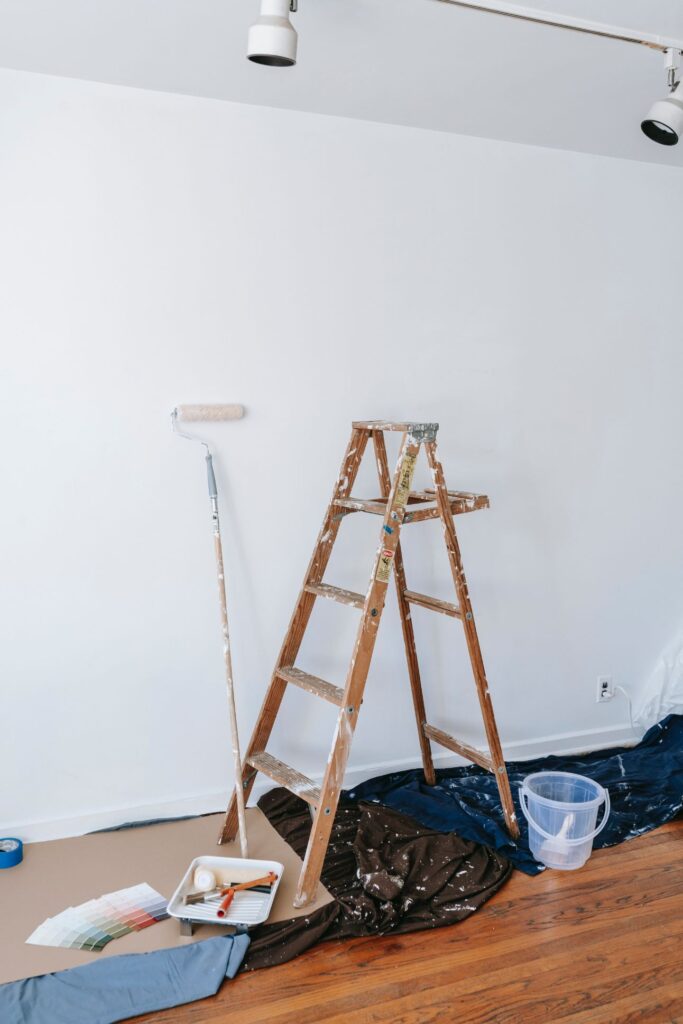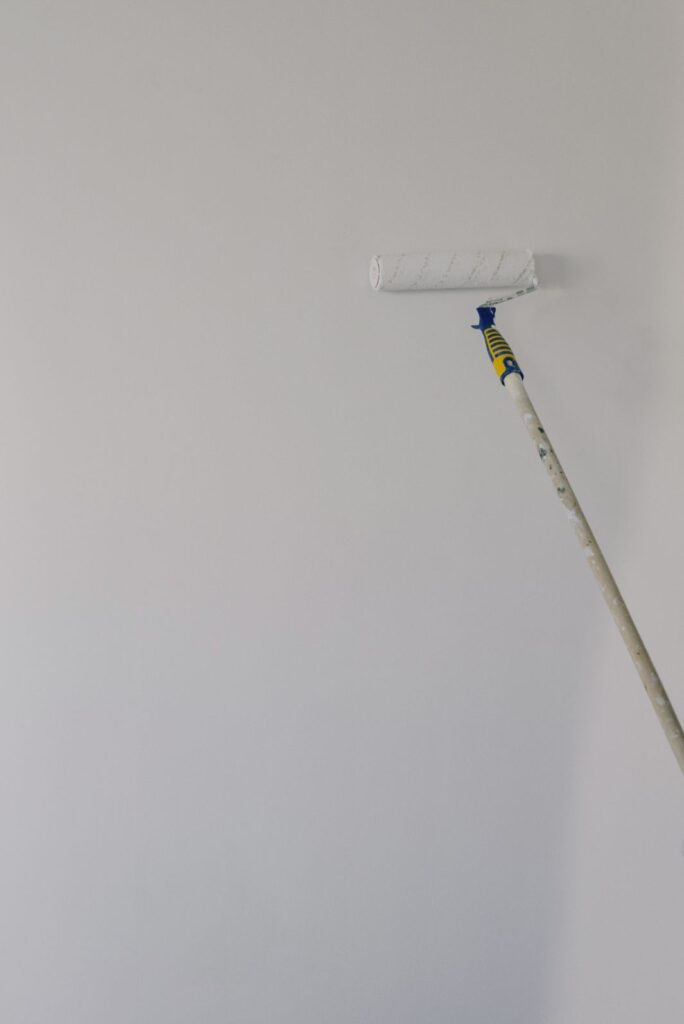Menu

When it comes to updating the look of your home, one of the most effective and affordable ways to do so is by painting. However, painting over stained wood surfaces can be challenging, and without the right techniques, you may end up with a less-than-perfect finish. This guide provides a step-by-step process for painting over stained wood surfaces and offers useful tips and tricks to ensure a smooth and long-lasting result.
Whether you plan to tackle the project yourself or enlist the help of skilled exterior house painters in West Hartford, CT, this article provides valuable insights to achieve a professional-looking exterior. With the knowledge and techniques provided, you can refresh your home’s appearance and boost its curb appeal.
Before you start painting, it’s important to have all the necessary materials on hand. Here’s a list of the tools and supplies you’ll need:
Before you start painting, you’ll need to prep the surface. This step is crucial to ensuring a smooth and long-lasting finish. Here are the steps involved:
Now that the surface is prepped, it’s time to apply the primer. Primer is a preparatory coating that creates a smooth and even surface for the paint to adhere to. It also helps the paint to last longer. Here are the steps involved:

Using a primer is important because it ensures that the paint will adhere to the surface properly and helps prevent any stains or discoloration from bleeding.
Different primers are available, such as oil- and water-based primers.
You can use either a paintbrush or a roller to apply the primer. Begin at the top of the surface and work your way down, ensuring the entire area is evenly covered. Allowing the primer to dry entirely is essential before moving on to the next stage.
When painting stained wood surfaces, choosing the right type of paint is crucial for achieving a beautiful and long-lasting finish. Here are some of the best paint options for stained wood surfaces, and discuss why they are ideal choices for exterior house painters in West Hartford, CT, and beyond.
Acrylic latex paint is popular for painting stained wood surfaces, particularly for exterior projects. It is water-based, dries quickly, and easily cleanses with soap and water. It also offers excellent adhesion for surfaces, including previously painted or stained wood.
Oil-based paint is another popular choice for painting stained wood surfaces, especially for interior projects. It offers superior durability and a smooth finish, but it takes longer to dry and requires solvents for cleanup. In addition, oil-based paint is not recommended for exterior projects because it tends to crack and peel in humid or wet conditions.
Alkyd paint is a hybrid paint that combines the best qualities of oil-based and latex paints. It is easy to work with and dries quickly like latex paint, but it also offers oil-based paint’s durability and smooth finish. As a result, Alkyd paint is an ideal choice for interior and exterior projects, making it popular among professional exterior house painters in West Hartford, CT.
When choosing a paint for your stained wood surface, consider the following factors:

Now that the primer is dry, it’s time to apply the paint. Here are the steps involved:
Use a paintbrush or a roller to apply the paint. Start at the top of the surface and work your way down, covering the entire surface evenly. Apply the paint in thin, even coats, and follow the manufacturer’s instructions for drying times between coats.
Applying multiple coats of paint is essential for achieving a smooth and even finish. It also helps to ensure that the paint will last longer. The drying time between coats will depend on the type of paint you’re using. Exterior house painters in West Hartford, CT, suggest checking the manufacturer’s instructions for recommended drying times. In general, it’s best to wait at least 24 hours between coats.
Once you’ve applied the final coat of paint, there are a few finishing touches you can add to ensure a professional-looking finish.
If you want extra protection on the surface, apply a sealant after the final coat of paint has dried. A sealant will help to prevent water damage, and it can also help to prevent fading.
Apply the paint in thin, even coats to achieve a smooth finish. Use a paintbrush or a roller to smooth out any drips or bumps as you go. And always make sure to follow the manufacturer’s instructions for drying times and application techniques.

Once you’re finished painting, it’s important to clean up properly. Dispose of leftover paint and clean your brushes and rollers with soap and water. Ensure to clean up any paint drips or spills on the ground or surrounding areas.
Painting over stained wood surfaces can be challenging, but it can be done effectively with the right tools and techniques. At West Hartford House Painting Experts, we’ve helped countless homeowners in West Hartford, CT refresh the look of their homes with a fresh coat of paint. Following the steps outlined in this guide, you can achieve a professional-looking finish and add value to your home. Of course, always prep the surface properly, use high-quality materials, and follow the manufacturer’s instructions for the best results. And if you need exterior house painters in West Hartford, CT, don’t hesitate to contact us at West Hartford House Painting Experts for a free consultation.

Welcome to West Hartford House Painting Experts. We believe that we are the highest quality painting company in this community and we provide excellent customer service!